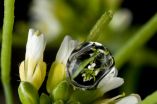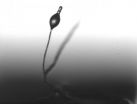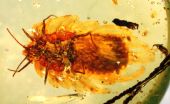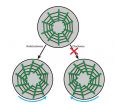(Press-News.org) Inhalable particles include all particulate matter with a diameter smaller than 10 micrometers (PM10). In this group a distinction is made between even finer particles smaller than 2.5 micrometers (PM2.5) in diameter, which can deeply enter the lung, and ultrafine particles with diameters less than 0.1 micrometers (100 nanometers), which can also enter the blood stream.
The research team at Helmholtz Zentrum München led by Prof. Dr. Annette Peters, head of the research program Epidemiology at the German Center for Diabetes Research (DZD), and Dr. Alexandra Schneider together with colleagues of the University of Rochester (USA), studied how ultrafine particles specifically affect the heart. They provided 64 study participants with measuring devices which recorded particle number concentrations as well as the heart activity (ECG, electrocardiogram) during daily activities. Furthermore, data from an urban background station for particulate matter were considered. The recruited participants had a confirmed diagnosis of impaired glucose tolerance (IGT) or type 2 diabetes.
Change in heart rate variability after only short-term exposure
"Elevated concentrations of ultrafine particles, e.g. in dense road traffic, led to a change in heart rate variability* of the participants after only five minutes," said Peters. "Moreover, we were able to confirm effects that are already known, for example that fine particles over the course of an hour and noise are associated with impaired cardiac function."
The adverse health effects of inhalable and/or fine particles have already been established in other studies. In the present study they occur below the EU threshold limit value, which has existed for the last ten years. The role of ultrafine particles, however, is unclear: Scientists expect additional adverse health effects - but to date no threshold limit values have been established.
Health risks - demand for threshold limit values
"The results are alarming because ultrafine particles occur generally in the environment and pose health risks for all of us - but especially for people who already have an elevated risk for cardiovascular disease, such as the individuals with diabetes in this study," said Peters. "We hope that with our data, we can substantiate the demands for threshold limit values and environmental standards in the future."
INFORMATION:
* Heart rate variability describes the adaptability of the individual's cardiovascular system to the demands of the current situation and is controlled by the autonomic nervous system.
Read more here about the scientific findings on the health effects of fine dust and noise:
Particulate Air Pollution Leads to Increased Heart Attack Risk, Results of the ESCAPE Study, press release of Helmholtz Zentrum München from January 22, 2014: http://www.helmholtz-muenchen.de/en/news/press-releases/2014/press-release/article/23334/index.html
Exposure to Everyday Noise Influences Heart Rate Variability, press release of Helmholtz Zentrum München from May 2, 2013: http://www.helmholtz-muenchen.de/en/news/press-releases/2013/press-release/article/21352/index.html
Further Information
Original-Publikation:
Peters, A. et al. (2015), Elevated particle number concentrations induce immediate changes in heart rate variability: a panel study in individuals with impaired glucose metabolism or diabetes, Particle & Fibre Toxicology, doi: 10.1186/s12989-015-0083-7
Link to publication: http://www.particleandfibretoxicology.com/content/12/1/7
To the blog network BioMed Central: "Air pollution could exacerbate cardiovascular disease in diabetes patients" http://blogs.biomedcentral.com/on-health/2015/03/30/air-pollution-exacerbate-cardiovascular-disease-diabetes-patients/
As German Research Center for Environmental Health, Helmholtz Zentrum München pursues the goal of developing personalized medical approaches for the prevention and therapy of major common diseases such as diabetes mellitus and lung diseases. To achieve this, it investigates the interaction of genetics, environmental factors and lifestyle. The Helmholtz Zentrum München has about 2,300 staff members and is headquartered in Neuherberg in the north of Munich. Helmholtz Zentrum München is a member of the Helmholtz Association, a community of 18 scientific-technical and medical-biological research centers with a total of about 37,000 staff members. The Helmholtz Zentrum München is a partner in the German Center for Diabetes Research. http://www.helmholtz-muenchen.de
Scientists at the John Innes Centre have discovered why the first buds of spring come increasingly earlier as the climate changes.
Dr Steven Penfield at the JIC found that plants have an ideal temperature for seed set and flower at a particular time of year to make sure their seed develops just as the weather has warmed to this 'sweet spot' temperature.
Dr Penfield, working with Dr Vicki Springthorpe at the University of York, found the sweet spot for the model plant Arabidposis thaliana is between 14-15?C. Seeds that develop in temperatures lower than 14?C will almost ...
Saurichthys is a predatory fish characterized by a long thin body and a sharply pointed snout with numerous teeth. This distinctive ray-finned fish lived in marine and freshwater environments all over the world 252-201 million years ago during the Triassic period. Two new species of this extinct fish have been discovered by paleontologists at the University of Zurich, working in collaboration with researchers in Germany and China. The first species, «Saurichthys breviabdominalis», is named for its relatively short body and the second, «Saurichthys rieppeli», ...
Darwin's evolutionary theory predicts survival of the fittest. So why do different survival tactics co-exist, if evolution should always favour the winning strategy?
To answer that question scientists at the Universities of Bath and Manchester have been studying a single-celled amoeba, also known as slime mould, which displays certain behaviours that have been labelled as "cheating" or "cooperating".
In a study, published in the prestigious journal Current Biology, the team found that cheaters don't necessarily win in terms of overall survival, suggesting that biologists ...
Scientists at the University of Bonn, together with colleagues from China, UK and Poland, have described the oldest evidence of brood care in insects: it is in a female scale insect with her young that is encased in amber as a fossil. The approximately100-million-year-old "snapshot" from the Earth's history shows the six millimetre long tiny insect with a wax cocoon, which protected the eggs from predators and drying out plus associated young nymphs. The researchers are now presenting their results in the respected journal eLIFE.
The small female insect with the waxy ...
Face recognition security on smartphones can be significantly improved if users store an 'average' photo of themselves, according to new research by scientists at the University of York.
A research team led by Dr David Robertson, of the Department of Psychology's FaceVar laboratory at York, found that combining different pictures of the user, rather than a single 'target' image, leads to much better recognition across all kinds of daily settings. The research is published in the journal PLOS ONE.
The researchers examined the performance of the 'face unlock' system ...
Researchers at the Mechanobiology Institute (MBI) at the National University of Singapore have discovered that the inherent 'handedness' of molecular structures directs the behaviour of individual cells and confers them the ability to sense the difference between left and right. This is a significant step forward in the understanding of cellular biology. This discovery was published in Nature Cell Biology on 23 March 2015.
Cellular decision making
Our bodies are made up of hundreds of different types of cells, each of which performs a unique and highly specialized ...
Researchers from the UK and Malaysia have detected a human fingerprint deep in the Borneo rainforest in Southeast Asia. Cold winds blowing from the north carry industrial pollutants from East Asia to the equator, with implications for air quality in the region. Once there, the pollutants can travel higher into the atmosphere and impact the ozone layer. The research is published today in Atmospheric Chemistry and Physics, an open access journal of the European Geosciences Union (EGU).
Rainforests are often associated with pure, unpolluted air, but in Borneo air quality ...
WASHINGTON-- The Society for Public Health Education (SOPHE) proudly announces the publication of a Health Education & Behavior (HE&B) supplement devoted to the latest research and practice on policy and environmental approaches to foster healthy communities. The April 2015 supplement, "The Evidence for Policy and Environmental Approaches to Promoting Health," comprises a dozen peer-reviewed articles and two perspectives examining the state-of-the-evidence on what's working and what's needed at the community, institutional and societal levels to promote good health across ...
A world first study revealing the presence of two antibodies in a sub-group of children experiencing their first episode of psychosis affirms a longstanding recognition that auto-immune disorders play a significant role in psychiatric illness.
Antibodies defend the body against bacterial, viral, and other invaders but sometimes the body makes antibodies that attack healthy cells. In these cases, autoimmune disorders develop. These include conditions such as multiple sclerosis (MS), rheumatoid arthritis and Type 1 diabetes.
This 'immune hypothesis' is supported by new ...
Almost every pig carries harmless strains of the S. suis bacterium - such strains are known as 'commensal' strains. However, a more virulent group of strains of the bacteria also exist, which cause disease in pigs worldwide and are a major driver of antibiotic use for prevention. Increasingly, this group of strains is also implicated in serious human diseases such as meningitis and septicaemia.
In order to understand the genetic basis of disease in S. suis, an international study, led by the Bacterial Respiratory Diseases of Pigs-1 Technology (BRaDP1T) consortium, examined ...





